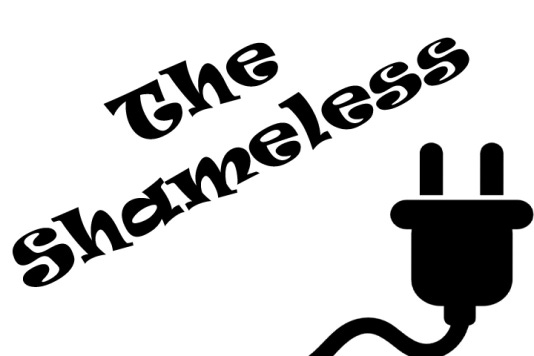The Real Causes of the Silicon Valley Bank Failure
It wasn't because the bank was "woke," and Biden stayed calm.
Issue #285 Government March 23, 2023
On March 10, 2023, Silicon Valley Bank (SVB), founded in 1983, failed after a bank run. It was taken over by federal regulators, marking the second-largest bank failure in United States history and the largest failure of a US bank since Washington Mutual in 2008.
On that Friday morning, trading in SVB shares was halted and it had abandoned efforts to quickly raise capital or find a buyer. California regulators intervened, shutting the bank down and placing it in receivership under the Federal Deposit Insurance Corporation (FDIC).
On Sunday after the failure, the FDIC received exceptional authority from the Treasury and announced jointly with other agencies that all depositors would have full access to their funds the next Monday morning.
Although some characterized the government response as a bailout, the plan did not entail rescuing the bank, its management, or its shareholders, but rather making uninsured depositors whole from the proceeds of selling the bank's assets, without the use of taxpayer money.
Right-wing media and politicians were quick to blame the "woke" policies of the bank for its failure. They defined "woke" policies as the fact that SVB had one Black person on its board.
Several Republicans and conservative commentators also argued – without evidence – that the bank failed because it was "woke" and distracted by its workforce diversity efforts.
Many Republicans also cited the bank's environmental, social, and corporate governance (ESG) investment program and suggested that the presence of minorities and military veterans on the bank's board of directors served as a distraction.
Please make sure to view and act on the important information at the end of this article to help support “We Are Speaking.” Thank you!
Here are the actual reasons why SVB failed:
The Federal Reserve began raising interest rates a year ago to tame inflation, and higher borrowing costs sapped the momentum of tech stocks that had benefited SVB.
Higher interest rates also eroded the value of long-term bonds that SVB and other banks invested heavily in during the era of near-zero interest rates.
At the same time, venture capital began drying up, forcing startups to draw down funds held by SVB. So the bank was sitting on a mountain of unrealized losses in bonds just as the pace of customer withdrawals was escalating.
On Wednesday, March 8, SVB announced it had sold a bunch of securities at a loss, and that it would also sell $2.25 billion in new shares to shore up its balance sheet. That triggered a panic among key venture capital firms, who reportedly advised companies to withdraw their money from the bank.
One of the primary reasons why SVB was allowed to take so many risks with the funds from its depositors and mismanage its portfolio so that the percentage of money tied up in bonds was too high. The percentage of "cash on hand" was so low that when depositors started withdrawing from their accounts, SVB tried to sell their bonds at a great loss to make up the difference.
In 2010, after the global financial crisis during the 2007-2009 Great Recession, Congress passed the Dodd-Frank Wall Street Reform and Consumer Protection Act.
Dodd–Frank reorganized the financial regulatory system, assigning new responsibilities to the Federal Deposit Insurance Corporation, and creating new agencies like the Consumer Financial Protection Bureau (CFPB).
The CFPB was charged with protecting consumers against abuses related to credit cards, mortgages, and other financial products. The act also created the Financial Stability Oversight Council and gave the Federal Reserve new powers to regulate systemically important institutions.
Republicans refuse to assign blame for the SVB failure on fewer regulations
In May 2018, Donald Trump signed the biggest rollback of bank regulations since the global financial crisis into law.
The rollback was designed to ease rules on all but the largest banks.
It raises the threshold to $250 billion from $50 billion under which banks are deemed too important to the financial system to fail. Those institutions also would not have to undergo stress tests or submit so-called living wills, both safety valves designed to plan for financial disaster.
Opponents argued that the changes could open taxpayers to more liability if the financial system collapses or increase the chances of discrimination in mortgage lending.
The easing of those regulations, especially the "stress tests," was instrumental to SVB's mismanagement and the lax oversight that led to its failure.
President Biden stayed calm and helped the Fed limit losses
Instead of the frantic knee-jerk reactions and false claims of the right-wing, President Biden addressed the nation on Monday morning, March 13, 30 minutes before the markets opened in the U.S.
President Biden said that customers of U.S. banks should have confidence that their money will be there when they need it. He also promised accountability for leaders and investors of banks that fail.
Bank stocks still fell, but lately, they have recovered, especially because the Federal Reserve stated that rate hikes will end for the time being. Higher interest rates put pressure on mortgages and other lending options.
Do you feel your banking institution is safe? Do you worry about rate hikes and current banking regulations?
You can always leave any questions in the comments or email us.
This article is free to access for 3 days after publication. Please consider becoming a paid subscriber for $5/month or less to access all of the articles and other benefits.
What else do Keith and Pam do?
Where else can you find us?
Click the link below to find out everything you need to know and review everything we offer for independent writers and creative and solo professionals.





